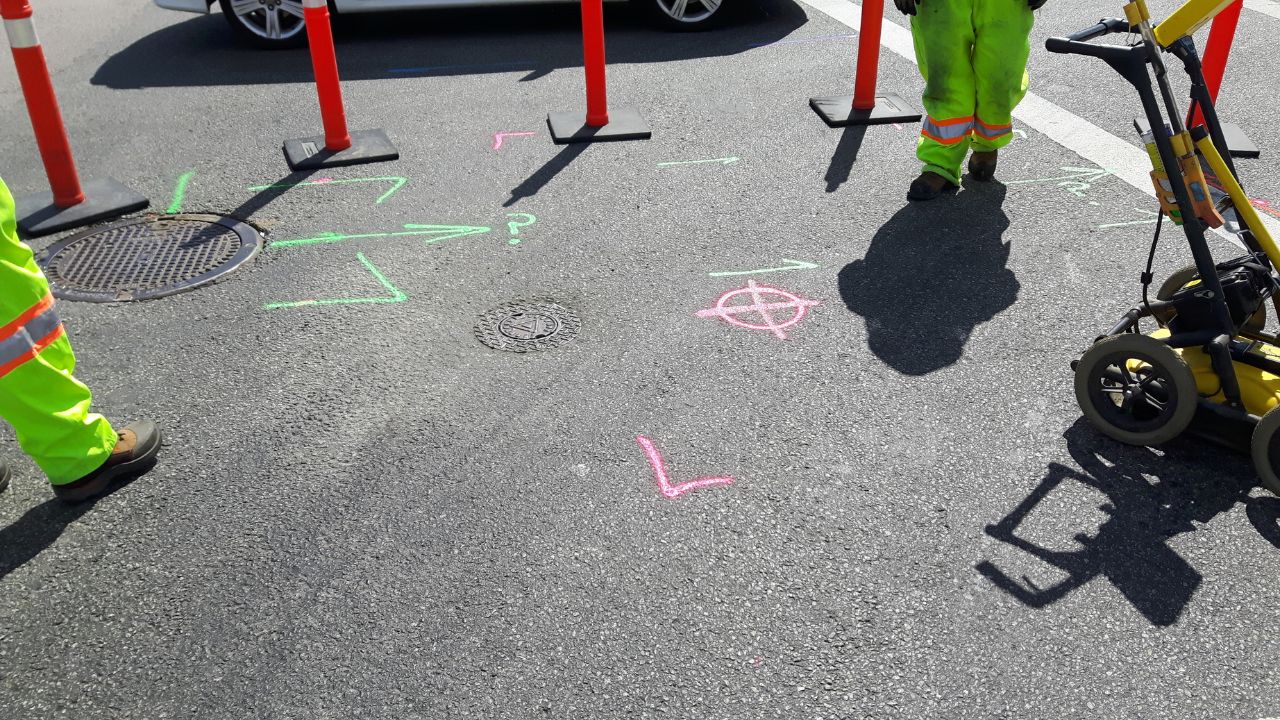
Key Takeaways
When working on construction, excavation, or maintenance projects, knowing where your underground utilities lie is crucial. Electromagnetic (EM) locators have become an essential tool in private underground utility locating services to detect pipes, cables, and other underground utilities.
These locators use electromagnetic fields to trace the location of buried utilities, making them an invaluable asset to any project that involves digging or construction. This article will explain how EM locators work, discuss the difference between active and passive locating methods, and cover their ideal use conditions and limitations.
If you're looking for professional High-voltage, understanding how EM locators can assist in identifying underground utilities will guide you in making the right choice.
Electromagnetic locators use electromagnetic fields to detect the presence and location of buried pipes, cables, and other utilities. These tools consist of two key components:
By measuring the electromagnetic fields, the locator can identify utilities' depth and position with remarkable accuracy. EM locators are commonly used for private utility locating services because of their effectiveness in identifying a variety of underground utilities.
When it comes to underground utility locating services, EM locators use two primary methods: active and passive locating. Both methods have their advantages and specific use cases.
Active locating involves applying an electromagnetic signal directly to the utility. This is typically done by attaching a transmitter to the utility line, which then sends a signal through the pipe or cable. The receiver detects this signal and helps the operator locate the utility's position.
Passive locating, on the other hand, involves detecting the electromagnetic fields that naturally radiate from active utilities. In this method, the receiver detects signals from live utility lines without requiring any external power source or direct contact.
To get the most out of an EM locator, it’s important to understand the ideal conditions under which they should be used. There are a few factors that can influence the effectiveness of an electromagnetic locator, including soil conditions, the type of utility, and the surrounding environment.
The soil composition greatly affects the performance of EM locators. Dry, sandy, and rocky soils may hinder the signal's ability to travel, while moist, clayey, or loamy soils can enhance the signal’s range and clarity.
The material of the utility being located also impacts the effectiveness of EM locators. Non-metallic materials like plastic or composite pipes can be more difficult to detect compared to metallic ones. However, active methods that induce a signal into the utility can help in locating non-metallic pipes.
Environmental factors such as interference from nearby electrical equipment or other metallic objects can impact the EM locator's performance. High-voltage power lines or other electromagnetic sources nearby may create false signals, making it more challenging to detect utilities accurately.
While EM locators are incredibly useful tools for private utility locating services, they do come with certain limitations. Below are some of the common limitations and ways to mitigate them.
As mentioned, EM locators are excellent at detecting metallic utilities but can struggle with non-metallic utilities. However, this limitation can be mitigated using active locating methods or additional equipment.
How to Mitigate:
Electromagnetic interference from nearby power lines, electrical equipment, or other metallic objects can cause the locator to pick up false readings or struggle to locate utilities accurately.
How to Mitigate:
EM locators can be less effective at detecting utilities that are buried very deep in the ground. The further the utility is buried, the more difficult it can be to detect.
How to Mitigate:
When it comes to locating underground utilities, including pipes and cables, accuracy and safety are paramount. By hiring a professional underground utility locating service, you gain access to advanced tools and expertise that can make all the difference in avoiding costly mistakes and ensuring safety. Here’s why opting for professional utility locating services is a smart choice:
Electromagnetic locators offer an efficient and non-invasive method for detecting buried utilities. Whether you’re dealing with metallic or non-metallic pipes, these devices are essential in helping you accurately identify underground utilities and avoid damage.
If you are planning a project and need precise utility locating services, Bess Utility Solutions is here to help. Their team of experts uses state-of-the-art EM locators to ensure your project runs smoothly and safely. Get in touch with Bess Utility Solutions today for reliable private underground utility locating services and make your next project a success.